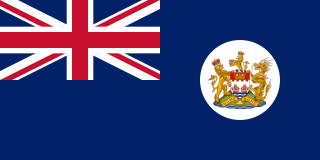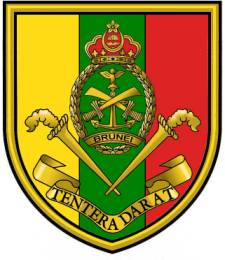
Brigade of Gurkhas is the collective name which refers to all the units in the British Army that are composed of Nepalese Gurkha soldiers. The brigade draws its heritage from Gurkha units that originally served in the British Indian Army prior to Indian independence, and prior to that served for the East India Company. The brigade includes infantry, engineering, signal, logistic and training and support units. They are known for their khukuri, a distinctive heavy knife with a curved blade, and have a reputation for being fierce and brave soldiers.

The Army Air Corps (AAC) is a component of the British Army, first formed in 1942 during the Second World War by grouping the various airborne units of the British Army. Today, there are eight regiments of the AAC as well as two Independent Flights and two Independent Squadrons deployed in support of British Army operations around the world. Regiments and flights are located in the United Kingdom, Kenya, and Canada. Some AAC squadrons provide the air assault elements of 16 Air Assault Brigade through Joint Helicopter Command.

British Forces Overseas Hong Kong comprised the elements of the British Army, Royal Navy and Royal Air Force stationed in British Hong Kong. The Governor of Hong Kong also assumed the position of the commander-in-chief of the forces and the Commander British Forces in Hong Kong took charge of the daily deployment of the troops. Much of the British military left prior to the handover of Hong Kong to China in 1997. The present article focuses mainly on the British garrison in Hong Kong in the post Second World War era. For more information concerning the British garrison during the Second World War and earlier, see the Battle of Hong Kong.

The Brunei revolt also known is Alternative name Brunei rebellion of 1962 was a December 1962 insurrection in the British protectorate of Brunei by opponents of its monarchy and its proposed inclusion in the Federation of Malaysia who wanted to establish a republic. The insurgents were members of the TNKU, a militia supplied by Indonesia and linked to the leftwing Brunei People's Party (BPP), which favoured a North Borneo Federation. The TNKU began co-ordinated attacks on the oil town of Seria, on police stations, and on government facilities around the protectorate. The revolt began to break down within hours, having failed to achieve key objectives such as the capture of Brunei Town and Sultan Omar Ali Saifuddien III. The revolt influenced the Sultan's 1963 decision not to join Malaysia. It is seen as one of the first stages of the Indonesia–Malaysia confrontation.

Seria is a town in Belait District, Brunei, about 65 kilometres (40 mi) west from the country's capital Bandar Seri Begawan. The total population was 3,625 in 2016. It was where oil was first struck in Brunei in 1929 and has since become a centre for the country's oil and gas industry. The town has few retail establishments, fresh food markets, supermarkets, banking services, tourist information centers, and a range of restaurants, including Chinese, Indian, and Italian ones as well as outdoor dining in somewhat rustic settings. For processing documentation related to owning a car and hiring domestic helpers (amahs), government offices are located in Kuala Belait.

667 Squadron AAC is a squadron of the British Army's Army Air Corps (AAC).

The Royal Brunei Land Forces is the land component of the Royal Brunei Armed Forces. The RBLF has responsibility for maintaining the territorial defence of Brunei, both from attack from outsiders, and by assisting the Royal Brunei Police in maintaining law and order.
No. 679 Squadron AAC is a British Army Reserve helicopter support squadron and is part of the 6 Regiment Army Air Corps. The squadron provides groundcrews to support Apache AH1 helicopters.
Army 2020 was the name given to the restructuring of the British Army in the early and mid-2010s, in light of the Strategic Defence and Security Review 2010. The plan, as its name suggested, was intended to be completed by 2020, though most of its reorganisations were completed by the middle of the decade. It was succeeded by Army 2020 Refine, a series of new changes and refinements of Army 2020's restructuring, conducted in light of the Strategic Defence and Security Review 2015.

658 Squadron AAC is an Army Air Corps unit of the British Army that provides dedicated aviation support to the 22nd Special Air Service Regiment for domestic counter terrorism (CT) operations. The squadron is co-located with 22 SAS at Stirling Lines. The press has given the squadron, their helicopters, and the CT response force they enable, the nickname "Blue Thunder". The squadron is part of the Joint Special Forces Aviation Wing.

3 RegimentArmy Air Corps is a regiment of the British Army and is part of the 16 Air Assault Brigade and Attack Helicopter Force (AHF), which is under the authority of the Joint Helicopter Command (JHC). As of April 2022, this regiment's commanding officer (CO) is Lieutenant Colonel Simon Wilsey and it is based at Wattisham Flying Station in Suffolk, England. This regiment operates the Apache AH Mk1 and AH-64E Apache attack helicopters.
No. 660 Squadron AAC is a squadron of the British Army's Army Air Corps (AAC). The squadron traces its lineage to a Royal Air Force squadron that existed during the Second World War. In the late 1950s the squadron's numerical was transferred to the AAC and since its formation in 1969, it has operated as a British Army unit flying various types of battlefield helicopters. The squadron has been re-formed and disbanded on a number of occasions. The squadron is currently based at RAF Shawbury where it forms part of No. 1 Flying Training School, but it has been deployed operationally to Northern Ireland, Hong Kong and Brunei throughout its existence.

No. 1563 Flight RAF is an independent flight of the British Royal Air Force (RAF). It operates the Westland Puma HC2 helicopters in Brunei. It previously flew tactical support missions for locally garrisoned British Army units, as well as Belize Defence Force units in Belize. Between 1963 and 1972 it was stationed at RAF Akrotiri flying Westland Whirlwind HAR.10 helicopters on support missions for locally garrisoned British Army and United Nations troops.

The structure of the British Army is being reorganised to the Future Soldier structure. The Army is commanded by the Chief of the General Staff (CGS), with Army Headquarters which is located in Andover, Hampshire. Subordinate to that post, there is a Commander Field Army, and a personnel and UK operations command, Home Command.
The following is a hierarchical outline for the British Armed Forces at the end of the Cold War. It is intended to convey the connections and relationships between units and formations.
The following is a hierarchical outline for the structure of the British Army in 1989. The most authoritative source for this type of information available is Ministry of Defence, Master Order of Battle, and United Kingdom Land Forces, HQ UKLF, UKLF ORBAT Review Action Plan, HQ UKLF, 1990.
Future Soldier is a reform of the British Army resulting from the Integrated Review of Security, Defence, Development and Foreign Policy published in March 2021. The aim of the reform is to create a more lethal, agile and expeditionary force, able to fight and win wars and to operate in the grey-zone between peace and war. Future Soldier was published on 25 November 2021 and deals with the organizational changes of the British Army, with changes to personnel and equipment were set out in the Defence in a Competitive Age paper published on 22 March 2021.

Officially known as Royal Brunei Air Force Base, Rimba,, commonly known as Rimba Air Force Base, abbreviated: Rimba AFB, and occasionally known as Rimba Airbase; it is the military headquarters and main operating airbase of the Royal Brunei Air Force. It is located at Rimba opposite, and sharing its main runway of 3,685 metres with the Brunei International Airport (BIA), at Bandar Seri Begawan, in the Brunei-Muara District of the sultanate of Brunei Darussalam.















